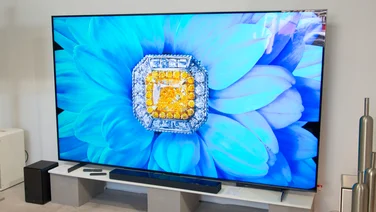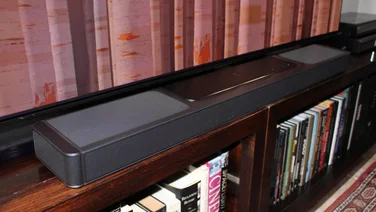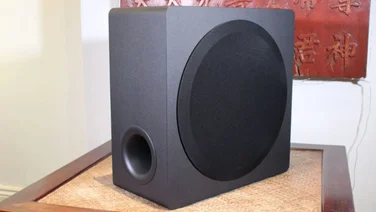To help us provide you with free impartial advice, we may earn a commission if you buy through links on our site. Learn more







The petite, Best Buy-winning Optoma ML550 is our favourite portable projector, but the Dell M900HD shows there’s still some merit in being slightly bigger and bulkier when it comes to lightweight office projectors. The M900HD’s LED lamp can produce a very bright 900 ANSI lumens, which is close to double the brightness of the Optoma ML550, and its huge lamp life of 30,000 hours provides great peace of mind. If using it on the move, remember to take its power adapter with you, as there’s no internal battery.

With such a strong lamp, we had no problem at all viewing PowerPoint presentations in our brightly lit test room. We were able to read black-on-white text and white-on-black text perfectly, although we had to strain our eyes slightly to read smaller text thanks to the limited focus ring round the lens.
Elsewhere, its 1,280×800 resolution looked great. Colours were bright, and we could even see a reasonable level of detail in our high contrast test photos. We’d still recommend turning the lights off if you want to present a lot of photos, but you should be able to leave the lights on for simple graphics such as graphs and charts.
The projector has a larger throw ratio than most pico projectors, so you’ll have to position it slightly further away from your projection surface to get a large image. Even so, we could display a diagonal of 71in from 7ft away, so you shouldn’t have a problem using it in most meeting rooms. There’s also a height-adjustable foot at the front of the projector to help you get the best angle.

Picture settings include Presentation, Bright, Movie, sRGB and Custom. While all five can technically be changed and altered to your liking, you’ll automatically be switched over to Custom as soon as you start adjusting the other four. This will erase any previous Custom setting you had, so we’d recommend sticking with Custom and only altering the settings when necessary.
There isn’t a lot of scope for tweaking the picture, though, as Advanced Settings only lets you change the brightness, contrast, colour temperature and white intensity. There are also options to use the 10x digital zoom, change the aspect ratio from its native 16:10 to 16:9 or 4:3, or turn off its auto-keystone correction. Just be aware that you won’t be able to access these settings if you’re projecting files stored on a USB drive, as pressing the menu button only brings you back to its internal multimedia browser.
The M900HD has a small but useful range of inputs. It’s a just shame they’re concealed by a cheap pop-off strip of plastic round the back, but here you’ll find an HDMI input, a USB port, an SD card reader and a headphone jack. It’s not quite as wide-ranging as the Optoma ML550, which even has an MHL-compatible HDMI input that lets you project from your phone or tablet, but it should still suit most business users.

Perhaps more useful is the ability to project wirelessly from your laptop using the M900HD’s self-generated Wi-Fi network. You’ll need to follow the onscreen instructions and install the Connection Manager Setup software the first time you use it, but it’s very easy to set up; we were projecting wirelessly in minutes. iOS and Android devices can also connect to the projector’s Wi-Fi network, but you’ll need to download the MobiShow or Wi-Fi Doc apps first. If this wasn’t enough, the projector also supports devices with Intel Wi-Di.
As if that wasn’t enough, you can also transfer files directly to the M900HD’s 2GB of internal storage via the bundled USB cable. Files are automatically sorted into Photos, Videos, Music and an Office Viewer through its Multimedia Browser interface, but it’s very slow to load. It took nearly three minutes to load our test PowerPoint presentation and larger files will slow it down even further, so we wouldn’t recommend relying on this for an important business presentation.

Its file format support was good, although we were disappointed it didn’t recognise XLSX files. Neither could it display PPT files. DOC, DOCX, PPTX and XLS files all worked without a problem, though, and the projector also played most of our video files, including AVI, MP4, MOV, MKV and WMV clips. It recognised our MP3, WMA, WAV and OGG music files and JPG, BMP, PNG and GIF images too.
The M900HD’s single 3W speaker is another welcome addition. The sound quality isn’t great, but it’s good enough for short audio clips and brief video presentations.
The Dell M900HD is a great portable projector, and the ability to project wirelessly via the M900HD’s own Wi-Fi network gives it a huge edge over its rivals. It comes at a big expense, though, as the Best Buy-winning Optoma ML550 is much cheaper and far more portable. If you don’t mind its size and want the option of wireless projecting, then the M900HD could be for you.






